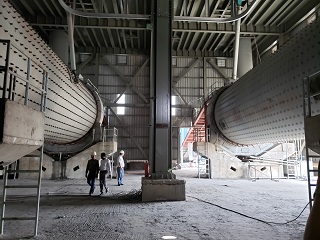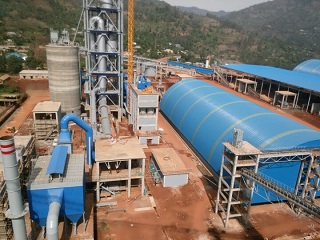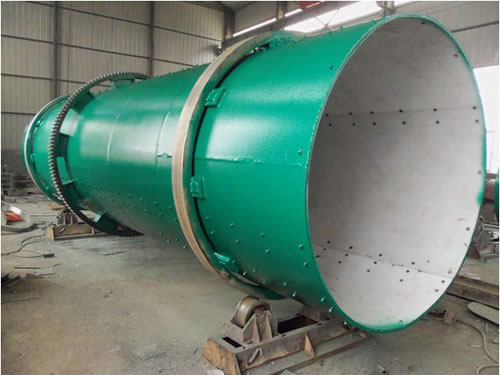Cement grinding station with annual output of 1 million tons
Description
The cement grinding station with an annual output of 1 million tons adopts the technology of separately grinding clinker and slag, among which the clinker grinding adopts the combined grinding process composed of two Φ 4.2m × 13m cement mills. The production process of the grinding station is stable, achieving the goal of high quality, high yield and low consumption.
Description
The cement grinding station with an annual output of 1 million tons adopts the technology of separately grinding clinker and slag, among which the clinker grinding adopts the combined grinding process composed of two Φ 4.2m × 13m cement mills. The production process of the grinding station is stable, achieving the goal of high quality, high yield and low consumption.
2.Main equipment 3.Main process
1. Design of clinker grinding production line. After the gypsum, rotary kiln clinker and limestone are measured by belt weigher, the prepared mixture is transported to the elevator by belt conveyor and sent to the stable flow weigher heavy bin. In this process, the material is removed from the magnetic metal by the iron remover, then mixed and fed to one of the mills. The enters the stable flow weigher heavy bin, and then mixed with the mixture The fine materials less than 2.5mm will enter another mill for grinding. The grinding materials and metered fly ash will enter the mixture elevator through the grinding tail conveyor chute, and then enter the K-type internal circulation powder concentrator through the selected powder conveyor chute. The coarse powder of the powder concentrator will be returned to the mill again. The fine powder will enter the finished product elevator through the air conveyor chute and enter the finished product warehouse. The dust containing gas from the mill is purified by the dust remover at the mill tail, then discharged into the atmosphere by the exhaust fan, and the collected fine powder is fed into the mixture elevator.
2. Design of slag grinding production line. Gypsum, dry slag and fly ash are measured by belt weigher, and the prepared mixture is sent to the mill by the elevator for grinding. In this process, the material is removed from the magnetic metal by the iron remover, the grinding material is sent to the mixture elevator through the grinding tail conveyor chute, and then sent to the K-type ultra-fine special high-efficiency powder concentrator through the conveyor chute of the selected powder machine in two parts. The coarse powder of the powder concentrator is returned to the mill again, while the cement product is sent to the mill The fine powder is collected by the air box pulse bag type dust remover, and enters the finished product elevator and the finished product warehouse through the air conveying chute. The dust gas from the mill is used as the primary air separator for K-type ultra-fine high-efficiency powder concentrator, and the fresh air is used as the secondary and tertiary air separator for powder concentrator. The dust gas is purified by the air box pulse bag filter, and then discharged into the atmosphere by the exhaust fan.
3. Mix design of slag powder and clinker powder. In the separate grinding process, the clinker powder and slag powder should not only meet the fineness, but also pay attention to the two problems of accurate measurement and even mixing. Therefore, we choose the spiral metering scale as the metering equipment, and choose the air conveying chute, which can not only be used as the mixing equipment, but also as the conveying equipment. The spiral metering scale is composed of overflow single pipe spiral and metering single pipe spiral. The former plays the role of stabilizing the flow, ensuring the feeding is even and timely, and the latter measures to ensure the accuracy and stability of the metering. The air conveying chute adopts the principle of fluidization to transport materials, so that the slag powder and clinker powder are constantly rolling and stirring in the conveying process.
ENQUIRY







